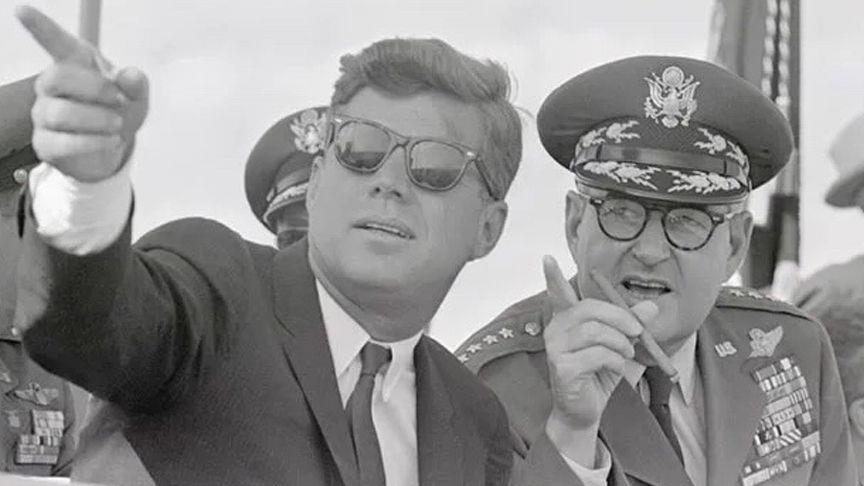Curtis LeMay was born in 1906 in Columbus Ohio. Curtis studied civil engineering at Ohio State University. LeMay joined the U.S. Army Air Corp while studying at Ohio State McMaitland in 1934. Curtis had risen to the rank of major by the time of Japan’s attack on Pearl Harbor in 1941, and the United State’s’ subsequent entry into World War II. He was commander of a newly created B-17 Flying Fortress unit, the 305th Bomb Group. He took his unit to England in October 1942 as part of the Eighth Air Force, and led it in combat. He assisted in the development of the combat box formation until May 1943. In September 1943, he became the first commander of the newly formed 3rd Air Division. He personally led several dangerous missions including leading the 146 B-17s to Regensburg Germany beyond the range of escorting fighters. After the bombing, he continued on to bases in North Africa, losing 24 bombers in the process.
Curtis was nicknamed “Old Iron Pants,” “Bombs Away LeMay”, and the “Big Cigar.”
In a discussion of a report on the high abort rates in bomber missions during World War II, Robert McNamara suspected it was because of pilot cowardice. McNamara described LeMay’s character:
“One of the commanders was Curtis LeMay-Colonel in command of a B-24 [sic] group. He was the finest combat commander I came across in war. But he was extraordinarily belligerent, many thought brutal. He got the report. He issued an order. He said, “I will be in the lead plane on every mission. Any plane that takes off will go over the target, or the crew will be court-martialed.” The abort dropped overnight. Now that’s the kind of commander he was.”
 |
|
General Curtis LeMay with President John F. Kennedy
File Photo
|
LeMay concluded that the techniques and tactics developed for use in Europe were unsuitable against Japan. His bombers were dropping their bombs near the targets only 5% of the time. Operational losses of aircraft and crews were unacceptably high owing to Japanese daylight air defenses. One of the issues was that bombs dropped above 20,000 feet were often blown from their trajectories by a consistently powerful jet stream over the Japanese islands.
After the war LeMay was briefly transferred to the Pentagon as deputy chief of Air Staff for Research & Development. He returned to Europe in 1947 as commander of USAF Europe. There he led very successfully.
In 1948, he returned to the U.S. to head the Strategic Air Command (SAC) at Offutt Air Base. Upon receiving his fourth star in 1951 at the age 44, LeMay became the youngest American four-star general since Ulysses S. Grant. He would also become the longest serving person in that rank.
When LeMay retired he lived in Newport Beach, California. In 1989, he moved to Air Ville West, a retirement community for former Air Force officers near March Air Force Base in Riverside. He died on October 1, 1990. He was buried in the U.S. Air Force Academy Cemetery at Colorado Springs Colorado.
